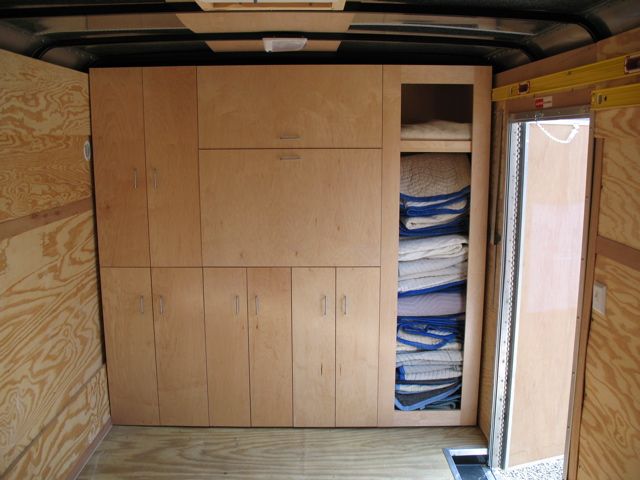Question
I am seriously thinking about stepping up to a wide-belt sander. Due to cost, floor space availability, and somewhat limited need (my volume is not that high), I am looking at the small units. Specifically, I would like any feedback on the 15" open end variety. Sunhill, General International, Grizzly are a few manufacturers. Like many offshore machines, the physical similarity between these machines causes me to think they are all made in the same factory. However, I also realize that does not make them identical.
In general, I'm a bit leery of an open end design due to concern about accuracy of potential deflection. However, the small footprint, power requirements, and cost make these units very attractive. In particular, I can envision most of my requirements falling under the 15" width, and occasionally a double pass would give me 30" - assuming the overlap is not an issue because of the oscillating belt.
There are a couple of cab shops in my area with big units (42" or 52") that I can get to run the very occasional piece that is wider than 30", but largely for convenience I would like to have some basic wide-belt capability in my own shop.
Does anyone have any comments? Also, there seems to be two types of these machines - straight roller/drum type, and the kind with a roller and platen. What is the difference, and which is preferable?
A cheaper alternative would be drum - single, double, oscillating etc. Most of the opinions that favor drum come from people that have never owned or used wide-belt. I don't recall reading any opinions from people that have owned both saying that they prefer drum.
Forum Responses
(Cabinetmaking Forum)
From contributor A:
The usefulness of a 15" wide sanding area depends on your normal needs. For me, 15" would not be practical as I routinely need to sand 18" wide doors. On the occasion that I need to sand wider than 24" I send the panel(s) out to another shop that has a 42" wide belt. Check your work orders for specs and see if 15" will do most of your work. If it won't, then buy a wider sander of either type.
To contributor B: Thanks, that is good to know. (see additional comments below)
Hereís an update - I drove down to Bellingham and Seattle a couple days ago to look at the Sunhill and Grizzly in person.
The two are virtually identical except for a couple of features. After crawling through them for a couple of hours I would conclude they are the same Ė that is, same manufacturer and same specs. The Grizzly, however, had at least two important advantages - it is a combination head design (platen), with the emergency stop bar across the front, and it has the outrigger table extension for running panels wider than 15". With the marginal price difference ($3k for the Grizzly, $2800 for the Sunhill), I would go for the Grizzly.
From a lot of reading and talking to people, the idea of a platen is sounding significant for my purposes. Because of the varied nature of my needs, this will not be a thickness sander only, or a finishing sander only. It is my understanding that for veneered work - plywood for example - the platen is favored. The greatest single operation I do is solid wood edging on plywood - quite common in the boat interiors that I work on. The ability to flush the panel with a wide belt would be valuable. With an A type head (drum only), it's my understanding that you could cut through the ply veneer quite easily, given the increasing non-flat quality of plywood today.
The downside of the trip was I got quite entranced by the 24" model - with the digital controls. The idea of dialing in .250" and pushing a button is very cool. In fact, my only remaining concern about the 15 inchers is the fairly coarse adjustment wheel - one turn equals 4mm. Thatís very touchy, and I would plan to put a digital readout on it, similar to the one I put on my planer and shaper. But $7k is just too rich for my blood at this time.
So my conclusions are that the platen is a very good thing for my situation, and the Grizzly unit is a good solution. To put this in perspective: the Grizzly is US $3050, which is about Canadian $3700. The General International available here is Canadian $8700 for the platen model.
